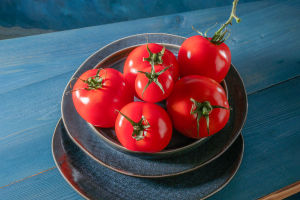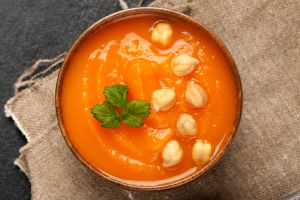Pineapple Without Sting
Pineapple is a deliciously sweet and tangy tropical fruit, but many people experience an uncomfortable prickly sensation in their mouths after eating it.
While soaking pineapple in salt water is a common trick to avoid this, there's another effective method that can help you enjoy pineapple without irritation.
This guide will explain why pineapple can sting your mouth and offer alternative ways to prepare it to prevent that pesky discomfort.
1. Understanding Bromelain: Why Pineapple Causes Irritation
Before we dive into the solution, it’s helpful to understand why pineapple can irritate your mouth in the first place:
Bromelain Enzyme: Pineapple contains a proteolytic enzyme called bromelain, which breaks down protein molecules. This enzyme is particularly concentrated in the core of the pineapple and can cause a tingling or burning sensation when it comes into contact with the sensitive tissues of your mouth. Bromelain essentially begins to break down the proteins in your mouth, which is what causes the discomfort.
Acidity: Pineapples are also naturally acidic, which can exacerbate the sensation of burning. The combination of bromelain and acidity can make eating pineapple a bit of a painful experience for some, especially if the fruit isn’t prepared correctly.
2. The Secret Solution: Heating the Pineapple
One of the easiest and most effective ways to prevent pineapple from pricking your mouth is to apply heat to the fruit. Here’s why it works:
Heat Deactivates Bromelain: Bromelain is sensitive to heat and loses its enzymatic properties when exposed to higher temperatures. By lightly cooking or grilling the pineapple, you can deactivate the bromelain, eliminating its irritating effects while keeping the fruit’s sweetness intact.
Methods for Applying Heat:
Grilling: Grilling pineapple is a popular method that not only deactivates bromelain but also enhances the flavor. The heat caramelizes the natural sugars in the pineapple, giving it a richer, sweeter taste. Simply cut the pineapple into slices and grill each side for a few minutes.
Blanching: Another option is to blanch the pineapple by briefly immersing it in boiling water for about 30 seconds to 1 minute, then transferring it to cold water to stop the cooking process. This method is quick and doesn’t significantly alter the taste or texture of the pineapple.
3. Other Ways to Enjoy Pineapple Without the Sting
In addition to heating, there are other ways to minimize the effects of bromelain and enjoy pineapple comfortably:
Ripe Pineapple: Make sure your pineapple is fully ripe before eating it. Unripe pineapples contain higher levels of bromelain, which increases the likelihood of irritation. A ripe pineapple will have a sweet aroma at the base and should give slightly when pressed.
Cutting Out the Core: The core of the pineapple contains the highest concentration of bromelain. Removing the core before eating the pineapple can significantly reduce the stinging sensation. When slicing the fruit, make sure to cut out the tough, fibrous center.
Eating pineapple without experiencing that annoying prickly sensation is entirely possible with a few simple tricks. While soaking the fruit in salt water has been a go-to method for many, heating the pineapple is a highly effective alternative that keeps its flavor intact. Whether you choose to grill, blanch, or microwave your pineapple, these techniques will deactivate the bromelain enzyme, allowing you to enjoy this tropical treat without discomfort. By removing the core or pairing it with dairy, you can further reduce the risk of irritation, making pineapple a safe and delicious addition to your diet.


